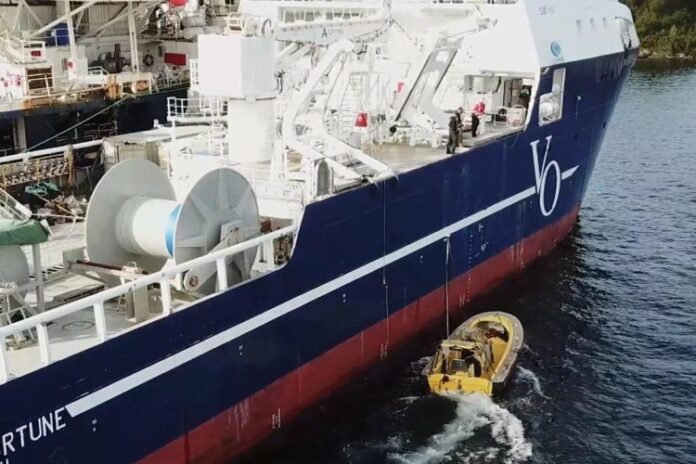SOLUSV is a cost-effective and compact equipment fit for an Unmanned Surface Vehicle (USV) and can be used with existing Davits.
Sea trials conducted by a combined team of engineers from Vestdavit and H. Henriksen have provided proof of concept for SOLUSV – a new launch and recovery system that simplifies and enhances Unmanned Surface Vehicle handling. The tests took place on board a Vestland Offshore vessel, whose existing boat and davit system were modified to accommodate SOLUSV equipment before the team oversaw repeated Launch and Recovery cycles.
Kristian Moss, Technical Supervisor at Vestdavit, said:
“We were very pleased that the testing proved that SOLUSV is an excellent method for the Launch and Recover of USVs following a period of intense development. Not only did the equipment prove to be very user-friendly and perform flawlessly, but it was also extremely simple to install on the vessel’s existing infrastructure, taking very little time at all.”
The vessel’s Fast Rescue Craft stood in for the USV for the purposes of the test and was equipped with a lightweight winch drum set up with dyneema rope and a robust Telescopic Pole. The dyneema rope is eight times lighter than an equivalent steel wire, keeping the total system weight to an absolute minimum. The vessel’s davit system was also modified to take the dyneema rope.
Following the launch of the USV – accomplished by the usual method involving a boat-mounted safety offload hook – recovery is controlled completely by the operator on board the vessel. The USV returns to its station alongside the vessel, at which point the operator activates the telescopic pole extending the dyneema rope to deck level, allowing the operator to catch the rope. The soft links of the rope are then fed into the painter system and the davit respectively, at which point the USV is recovered.



